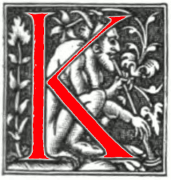
ing George IV (or "Prinny," as his subjects affectionately nicknamed him), was born in 1762, the eldest son of one of Britain's longest-reigning monarchs, George III. Owing to his father's bouts of insanity, George, Prince of Wales, became Prince Regent in 1811, ushering in a period of exuberance in fashion and literature called "The Regency." After a strict childhood dominated by "Farmer George," at age 18 Prinny had broken out — first with an intrigue with an actress (Mrs. Robinson), and then with a married woman, Mrs. Fitzherbert, a Roman Catholic whom he clandestinely married when he was just 23 — at 25, she was already twice a widow! Prince George had been 21 when, in 1783, he had made his first visit to Brighton, which, although still a village ("Brighthelmstone"), had delighted him with assemblies, balls, gambling, and promenading by the sands of the English Channel. Here was the ideal place to escape the stodgy royal father who so disliked him, and to be with people of wit, beauty, and style. After this marriage, in 1786 he leased "the superior farmhouse" in the valley of the Steine River which he commissioned architect Henry Holland to refurbish as a neoclassical mansion, but which he was subsequently to transform into a Coleridgian Xanadu with exotic Chinese interiors and Moghul exteriors. Since he was underage and since the Catholic ceremony was not recognized under English law, Prinny was free to marry again — to Princess Caroline of Brunswick in 1795. He agreed to marry the enormously heavy German princess on condition that Parliament pay his debts of £650,000. Mind you, now 33, George was no midget at 17 stone (238 lbs.) He sought divorce from her, but the scandal that notion engendered ended with her death in 1821. When George IV visited Scotland in 1822, Sir Walter Scott orchestrated a magnificent reception for him, despite his Hanoverian lineage andÊ lingering Jacobite memories of his uncle, Butcher Cumberland, and the ignominious defeat of Bonnie Prince Charlie in Culloden in 1745.

View of the Royal Pavilion today. [Photograph by Jacqueline Banerjee. You may use this image without prior permission for any scholarly or educational purpose as long as you (1) credit the photographer and (2) link your document to this URL in a web document or cite the Victorian Web in a print one. Click on the image to enlarge it.]
However, rather than at Edinburgh, Windsor, or even Buckingham Palace, Prinny's patronage of the arts may be appreciated best at Brighton. George IV's being proclaimed "The First Gentleman of Europe" stems from the fact that he recognized the architectural genius of John Nash (his "Surveyor-General" who transformed Holland's mansion into a Mogul palace by adding the onion-shaped dome, tent-like roofs, and numerous pinnacles and minarets), and the fashion genius of Beau Brummel (1778-1840), inventor of trousers as we know them, and the culinary genius of Marie Antoine Carême (1784-1833), Talleyrand's chef at the Congress of Vienna and the inventor of caramel.
Parliamentarians and courtiers alike shook their heads at the ruinous extravagance of Prinny's construction of the Brighton Royal Pavilion, which became the grandest, most daring, and most beautifully worked out royal fantasy anywhere in Europe. Here as in Carlton House, Windsor Castle, and Buckingham Palace, George played an active role, in constant control of his architects and decorators. Despite its oriental lines, life within the Pavilion was stuffy owing to the heat of the patent stoves and the gas lighting (itself an innovation). In 1811, Prinny also commissioned the construction of grand stables (now a concert hall) in an appropriate Indian idiom. In 1820, after nine years as Regent, George became King George IV. He was 59, and in bad physical condition — though still able to sing "Glorious Apollo" or "Mighty Conqueror" in the Royal Pavilion's sunlit music room. He made his last visit to Brighton in 1827; by then, the oriental vision had faded, and he was averse to resort town's prying crowds.
On the 26th of June, 1830, George IV died at Windsor Castle, still engaged on building projects. His demise signalled the end of the Georgian style. King William IV, who briefly occupied the throne from 1830 to 1837, treated Mrs. Fitzherbert with respect and kindness, but she was merely a relic of a bygone era, and the new king lacked his brother's sense of fashion and style. William IV stayed at the pavilion, but Queen Victoria found it lacking in privacy and moderation. In 1845, she ordered the pavilion closed, and the furnishings removed. By the 1850s, George's oriental pleasure dome at Brighton had already been gutted. A Bill proposed that the profits from stripping the Pavilion be applied to "repairing and enlarging Her Majesty's Palace called Buckingham Palace." The corporation of Brighton averted the threat of demolition by purchasing the empty palace for £50,000 — which has proved a good investment. In 1865 Queen Victoria returned many of the original decorations and fittings; complete restoration had to wait until early in the reign of Queen Elizabeth II, who ordered returned on permanent loan the balance of the original furnishings removed by Queen Victoria's agents.
Related Material
- Farmhouse to Pleasure Dome: The Building of the Royal Pavilion, Brighton (1786-1822)
- The Banqueting Hall and the Music Room: Ostentation Run Riot
- The Royal Pavilion (east front and other views)
- Royal Stables
References
Automobile Association of Great Britain. Treasures of Britain and Treasures of Ireland. Drive Publications, London: 1973. Pp. 99 & 101.
Higginbottom, David. Il. John Barrow and Eric de Mare. The Brighton Royal Pavilion. Brighton, Sussex: The Royal Pavilion, Museums and Libraries Committee, 1972.
Plumb, J. H. "George IV." Royal Heritage: The Story of Britain's Royal Builders and Collectors. British Broadcasting Corporation, London: 1977. Pp. 197-242.
Last modified 21 April 2016